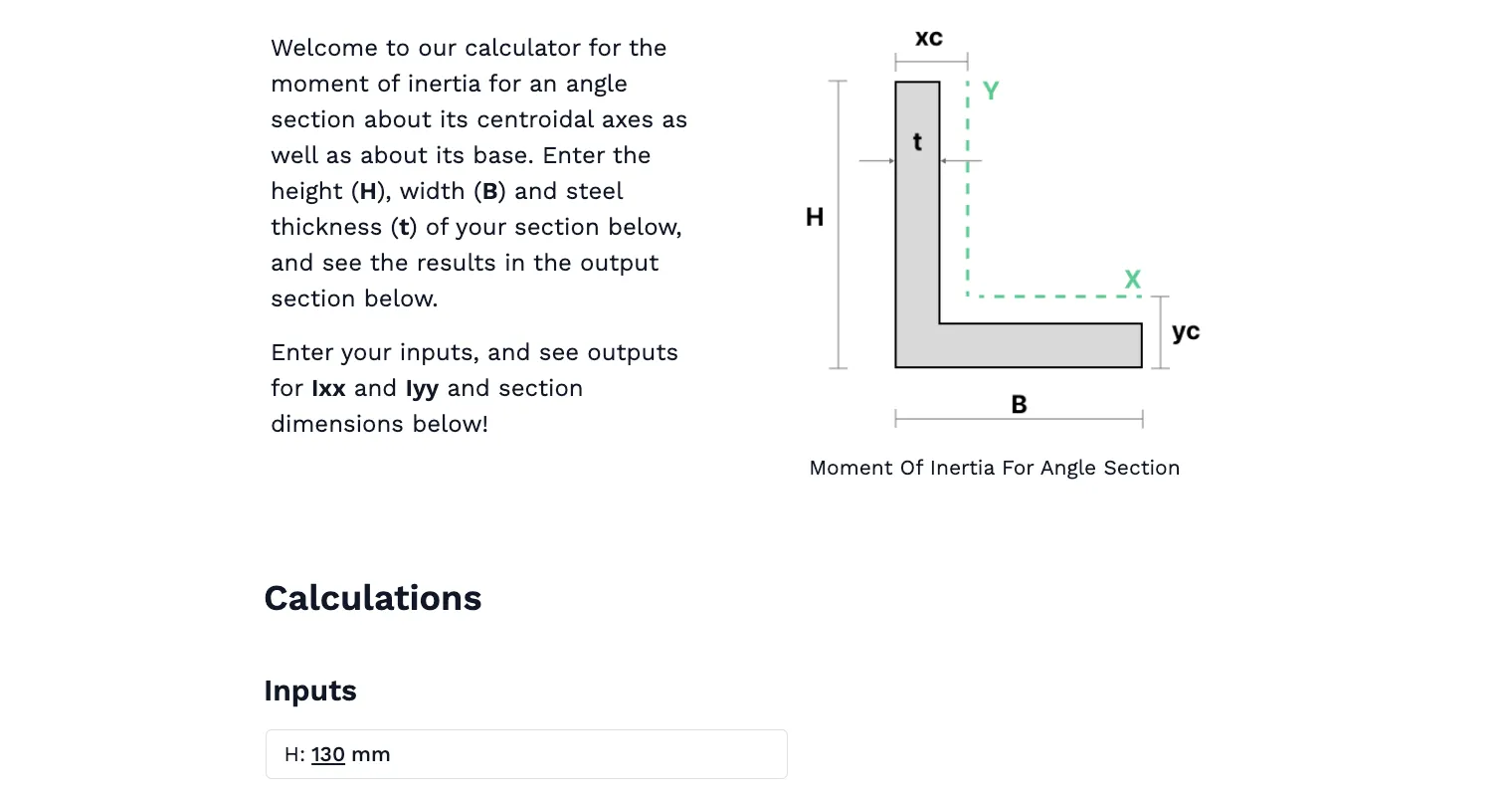Free Moment of Inertia Calculator: Angle Section. Step-by-step, engineering-grade tool with downloadable report.

This template is not available yet. You can sign up and create it yourself!
Or let us know if you'd like to be notified when it’s ready:
About this calculator
The Moment of Inertia Calculator: Angle Section is a specialized tool for calculating the moment of inertia for an angle section about its centroidal axes and base. By entering the height, width, and thickness of the section, users can quickly obtain precise results. This calculation is essential for structural and mechanical engineering applications where understanding the stiffness and resistance to bending or twisting is critical.
This calculator is for:
- Structural Engineers: Design and analyze beams, frames, and other components with angle sections under load.
- Mechanical Engineers: Evaluate the resistance of angle sections to bending or torsion in machinery and assemblies.
- Students and Researchers: Explore the relationship between geometry and moment of inertia in structural sections for academic or project-based learning.
The Moment of Inertia Calculator: Angle Section provides a fast and accurate way to check and validate moment of inertia values for standard and custom angle sections. For more complex geometries or assemblies, finite element analysis (FEA) software or manual integration methods can be used. Textbooks such as Mechanics of Materials by Gere and Goodno or Structural Analysis by R.C. Hibbeler offer detailed explanations and examples of moment of inertia calculations.
Engineering templates
Common calculators
Design guides
FAQs
What is the moment of inertia?
The moment of inertia is a measure of an object's resistance to bending or twisting about a particular axis, depending on its shape and distribution of material.
How do centroidal axes differ from the base axis in moment of inertia calculations?
Centroidal axes pass through the center of mass of the section, while the base axis refers to an axis along the base of the section. The choice of axis affects the moment of inertia value.
How does moment of inertia relate to structural stability?
A higher moment of inertia indicates greater resistance to bending or buckling, which is crucial for ensuring stability and performance in structural applications.
Learn about the benefits of using CalcTree on engineering projects!




